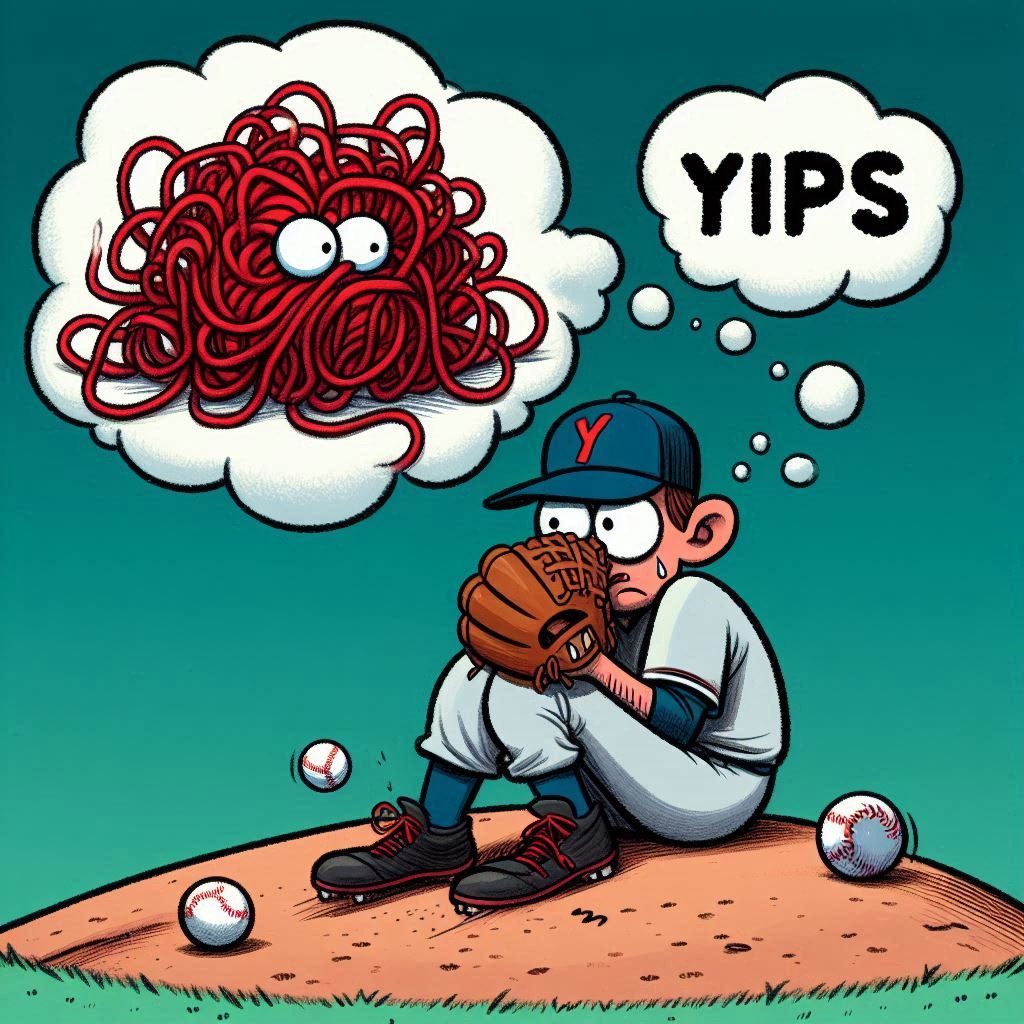
The Yips In Sport
The yips in sports refer to involuntary wrist muscle spasms that strike athletes during crucial moments. While they’re often associated with golf or baseball, athletes in sports like bowling, darts, and cricket can also experience them.
There are three main types of the yips in sport
Yips I (Muscle Spasms or Freezing)
These involve sudden, unexplained loss of fine motor skills, particularly in the hands and wrists.
Yips II (Performance Anxiety and Psychological Symptoms)
Beyond physical spasms, athletes may experience anxiety and overthinking, which worsen the condition.
Yips III (Muscle Spasms and Performance Anxiety)
A combination of both muscle spasms and psychological distress.
Causes of the Yips
The yips have a multifaceted origin
Muscle Overuse and Dystonia
Repetitive wrist movements can lead to dystonia—a condition causing involuntary muscle contractions. This physical aspect underlies the yips.
Performance Anxiety
Elite athletes, hyper-focused on their actions, may overthink their movements, exacerbating the yips.
Psychological Stress
Anxiety, self-consciousness, and stress related to performance can intensify the symptoms.
Who’s at Risk?
Yips are most common among experienced athletes who rely on precise hand and wrist movements. Golfers struggle with putting, while baseball players may experience yips when throwing short distances. However, anyone using fine motor skills can be affected, including non-athletes.
Coping Strategies
If you’re dealing with the yips
Try altering your grip or technique
———————————
Sports Psychology
Work with a sports psychologist to manage anxiety and improve performance.
Nature vs. Nurture On The Yips Debate
The origins of the yips remain a fascinating topic of discussion.
Natural Phenomenon
——————————
Biomechanical Factors
Some experts believe that the yips stem from biomechanical issues—overuse of specific muscles, muscle fatigue, or altered neural pathways.
Involuntary Spasms
The sudden muscle spasms experienced during the yips may be a natural response to stress or intense focus.
Individual Variation
Certain athletes may be more prone to these involuntary movements due to their unique physiology.

Psychological Influence Of The Yips In Sport
————————
Performance Anxiety
Anxiety and pressure play a significant role. Athletes who become hyper-aware of their movements may inadvertently trigger the yips.
Self-Fulfilling Prophecy
The fear of experiencing the yips can lead to a self-fulfilling cycle, where anticipation worsens the symptoms.
Mind-Body Connection
The interplay between mental state and physical performance is complex. Stress, fear, and self-doubt can exacerbate the yips.
Environmental Factors Of The Yips In Sport
——————————-
Pressure Situations
High-stakes moments—like a crucial putt in golf or a critical pitch in baseball—may trigger the yips.
Crowd Influence
External pressure from spectators, coaches, or teammates can impact an athlete’s performance.
Learning from Others
Athletes who witness peers struggling with the yips may inadvertently adopt similar patterns.
Conclusion
In reality, the yips likely result from a combination of natural physiological responses, psychological factors, and external influences. Understanding this intricate balance can help athletes cope and find effective strategies to overcome this perplexing challenge. Whether it’s muscle memory, mental resilience, or a bit of both, acknowledging the complexity of the yips is the first step toward managing them effectively.
Remember, the yips are real, and understanding their interplay between mind and body is crucial for overcoming this perplexing challenge. So whether you’re on the green or at your keyboard, stay resilient—you’ve got this!
Join the Discussion
We’ve explored the fascinating world of the yips—the mysterious muscle spasms that affect athletes during critical moments. But this topic isn’t just for researchers and experts; it’s for everyone. Whether you’ve experienced the yips firsthand, have insights to share, or simply want to engage in conversation, we invite you to join the discussion!
Share Your Thoughts
Athletes: Have you battled the yips on the golf course, baseball diamond, or any other arena? What coping strategies have worked for you?
Researchers – Do you study the physiological or psychological aspects of the yips? We’d love to hear about your findings.
Curious Minds – Maybe you’re intrigued by the mind-body connection or fascinated by the complexities of performance anxiety. Share your thoughts!
Connect with Us
Use the comments section below to share your experiences, theories, or questions. Let’s unravel the yips together!
#Yips #AthleteStruggles #PerformanceAnxiety #MindBodyConnection #SportsPsychology #FineMotorSkills #Overthinking #Golfers #BaseballPlayers #Dystonia #MuscleSpasms #PressureMoments #Biomechanics #PsychologicalFactors #JoinTheDiscussion #InvoluntaryMovements #AnxietyManagement #Resilience #SportScience #NeuralPathways #HighStakes #CuriousMinds #AthleticChallenges #PerformancePressure #SelfDoubt #PhysiologicalResponses #Complexity #Mindfulness #OvercomingChallenges #SportingCommunity








Howdy! This article couldn’t be written any better! Going through this post reminds me of my previous roommate! He always kept preaching about this. I will send this post to him. Fairly certain he’s going to have a good read. Thanks for sharing!